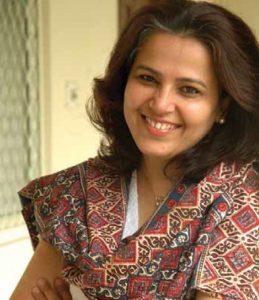 This volume focuses on the Jallianwala Bagh massacre, through a selection of hard hitting prose and poetry, penned by our literary giants — Saadat Hasan Manto, Mulk Raj Anand, Krishan Chander, Bhisham Sahni, Abdullah Hussein, Sarojini Naidu, Mohammad Iqbal, Josh Malihabadi, Nanak Singh and several other stalwarts. Each essay and verse tucked in this volume brings back those haunting memories of unarmed innocents killed in that shockingly brutal way. Though a century has passed by but not those imprints and memories. After all, the Jallianwala Bagh massacre was so very lethal that it would always stand out. Who can forget the fact that 1650 rounds were fired on the unarmed, in a matter of ten minutes, blocking all possible exits, preventing all possible interventions …as though killings of the hapless was the sole agenda of the killer, Dyer. To quote academic Rakhshanda Jalil , from the introduction to this volume- “On 13 April, at 1.30 pm, Dyer learnt from Mr Lewis, the manager of the Crown Cinema, that a meeting was going to be held at the Jallianwala Bagh despite prohibitory orders. Accompanied by his Brigade Major, Captain F.C. Briggs, in one car, and J. F. Rehill, Superintendent of Police and R. Ploomer, the Deputy Superintendent in another, Dyer reached the Bagh by 5.30 pm. He was accompanied by fifty Gurkha and Baluchi soldiers…Placing 25 soldiers each on either side of a raised strip near the entrance, Dyer ordered his men to fire: 1650 rounds of 303 marks were fired for 10 minutes. He issued no warning and continued firing even as people ran towards the exits. He directed fire where the crowd was at its thickest and also towards the exits. Of the estimated 15,000 people present in the Bagh, between five to six hundred died and approximately 1500 were wounded. Dyer left as abruptly and swiftly as he had arrived. No arrangements were made to rescue the wounded who lay soaked in their blood all night since a curfew was in place from 8 pm to 6 am. Only a handful of people ventured into the Bagh in search of their loved ones; many of the wounded died during the night … ” I could go on writing about this massacre, as details stand out …leaving one numb with pain and sorrow. Perhaps, this verse of Sarojini Naidu titled — Panjab 1919 – tucked in the pages of this volume, relays much —
This volume focuses on the Jallianwala Bagh massacre, through a selection of hard hitting prose and poetry, penned by our literary giants — Saadat Hasan Manto, Mulk Raj Anand, Krishan Chander, Bhisham Sahni, Abdullah Hussein, Sarojini Naidu, Mohammad Iqbal, Josh Malihabadi, Nanak Singh and several other stalwarts. Each essay and verse tucked in this volume brings back those haunting memories of unarmed innocents killed in that shockingly brutal way. Though a century has passed by but not those imprints and memories. After all, the Jallianwala Bagh massacre was so very lethal that it would always stand out. Who can forget the fact that 1650 rounds were fired on the unarmed, in a matter of ten minutes, blocking all possible exits, preventing all possible interventions …as though killings of the hapless was the sole agenda of the killer, Dyer. To quote academic Rakhshanda Jalil , from the introduction to this volume- “On 13 April, at 1.30 pm, Dyer learnt from Mr Lewis, the manager of the Crown Cinema, that a meeting was going to be held at the Jallianwala Bagh despite prohibitory orders. Accompanied by his Brigade Major, Captain F.C. Briggs, in one car, and J. F. Rehill, Superintendent of Police and R. Ploomer, the Deputy Superintendent in another, Dyer reached the Bagh by 5.30 pm. He was accompanied by fifty Gurkha and Baluchi soldiers…Placing 25 soldiers each on either side of a raised strip near the entrance, Dyer ordered his men to fire: 1650 rounds of 303 marks were fired for 10 minutes. He issued no warning and continued firing even as people ran towards the exits. He directed fire where the crowd was at its thickest and also towards the exits. Of the estimated 15,000 people present in the Bagh, between five to six hundred died and approximately 1500 were wounded. Dyer left as abruptly and swiftly as he had arrived. No arrangements were made to rescue the wounded who lay soaked in their blood all night since a curfew was in place from 8 pm to 6 am. Only a handful of people ventured into the Bagh in search of their loved ones; many of the wounded died during the night … ” I could go on writing about this massacre, as details stand out …leaving one numb with pain and sorrow. Perhaps, this verse of Sarojini Naidu titled — Panjab 1919 – tucked in the pages of this volume, relays much —
“How shall our love console thee, or assuage/ Thy hapless woe; how shall our grief requite/The hearts that scourge thee and the hands that smite/ Thy beauty with their rods of bitter rage?/ Lo! Let our sorrows be thy battle –gage/ To wreck the terror of the tyrant’s might/ Who mocks with ribald wrath thy tragic plight,/ And stains with shame thy radiant heritage!/ O beautiful! O broken and betrayed!/ O mournful queen! O martyred Draupadi!/ Endure thou still, unconquered, undismayed! / The sacred rivers of thy stricken blood/ Shall prove the five -fold stream of Freedom’s flood,/ To guard the watch-towers of our Liberty.”
letters@tehelka.com












